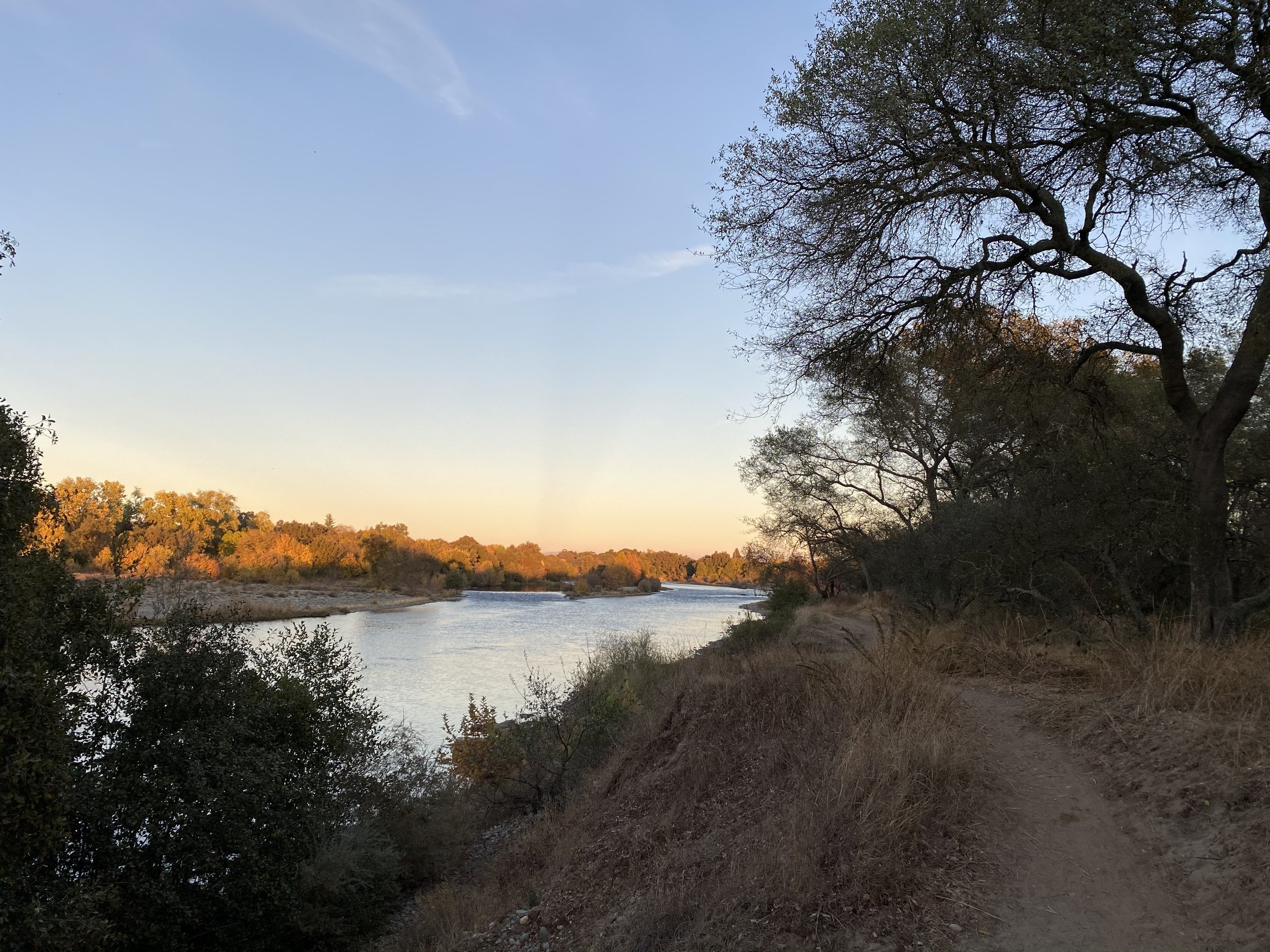SOCIAL TRAILS
Have you ever wondered why some of the most scenic trails along the parkway aren’t on the maps? They’re called social trails — read on for a bit of the backstory and why I’m mapping them out for my book.
The American River Parkway is home to an extensive network of trails — some of them show up on the park maps, while others are not mentioned at all. I’ve been puzzling over this for a while now. Too long, really. But finally, I popped into the American River Parkway Foundation (ARPF) Headquarters at William B. Pond and chatted with some of the lovely folks who work there, and they explained to me that the dirt trails can be divided into two groups: the multi-use trails and the social trails.
The multi-use trail stretches from downtown Sacramento all the way to Hazel Avenue. With a few exceptions, this trail can be found on both sides of the river, and it is marked by the occasional weathered metal post, indicating it is both a hiking and equestrian trail. Sacramento County Regional Parks stewards the multi-use trail. If a tree falls across the trail, they send it their workers to clear it. If there is flooding, erosion, or overgrown vegetation, they come in and fix it.
The Social Trails are the trails spontaneously formed by humans and animals. These social trails are not maintained by any one organization alone. They are often formed directly along the bluffs, and therefore subject to erosion. Trail-blazers, bushwackers, view-seekers, and thirsty animals made these. They are trails with history dating back to the Pony Express and well before that to the Nisenan tribes. If a human or an animal is going to go walking upriver, chances are they are going to walk along the river, where the view is the best, the path is clear, and the opportunity for a drink of water or a splash to cool off is closeby.
So, that’s the story behind the trails. My goal now is to map some of these previously unmapped trails. Another blog post will dive into the ways I’ll be partnering with others to help me map these into a book.



